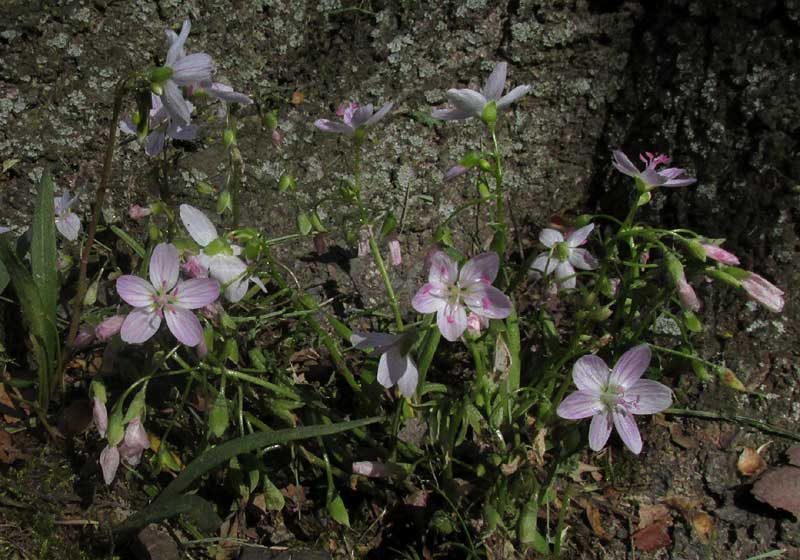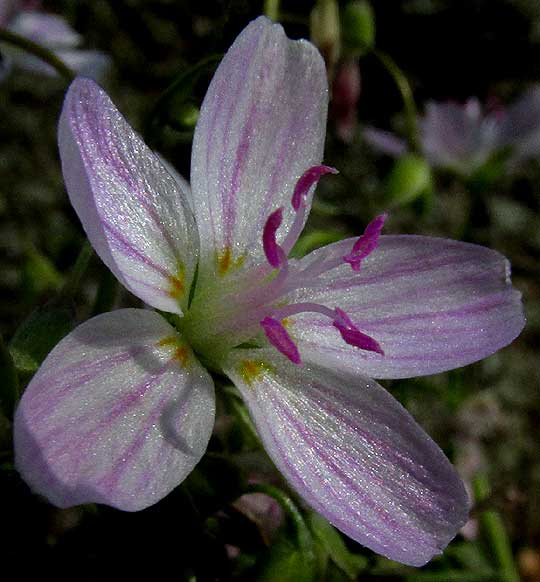Excerpts from Jim Conrad's
Naturalist Newsletter

from the April 19, 2015 Newsletter issued from Calhoun, McLean County, Kentucky, USA
SPRING BEAUTY
Years ago at this time of year the little park in front of my aunt's house where I'm staying in western Kentucky could be white with fingernail-size blossoms of the little wildflower called Spring Beauty, CLAYTONIA VIRGINICA. Nowadays frequent and early mowing has left only a few Spring Beauties, especially up against the trunks of trees, such as they ones shown above.
In that picture you can see that the flowers are mainly white, but they have a pinkish tinge, and the petals bear slender, pink veins. The pollen-bearing anthers are pink, too. A closer look at blossom is provided below:

Despite the hard time Spring Beauties are having with lawn mowers in the park across the street, they're still easy to find in many lawns, city parks, forests, roadsides, in wetlands, on bluffs, and in ravines. It's a resilient species, being a perennial that sprouts from underground corms. Corms are short, vertical, swollen, modified plant stems that serve as plant storage organs. Still, if any plant's leaves and stems are mowed down again and again, year after year, eventually it has to give up, as have our Spring Beauties in the park.
The Spring Beauty's corms are edible, striking some folks as like tiny potatoes, and sometimes are referred to as Fairy Spuds. In the classic book dealing with edible wild plants Stalking The Wild Asparagus, Euell Gibbons wrote that he ate Spring Beauty corms"... fried, mashed, in salads, and cooked with peas, like new potatoes." He preferred them boiled. The corms' skin are tough so their edibility is improved by being peeled, though that's not absolutely necessary. Spring Beauty's leaves, stems and flowers also can be cooked as greens. However, one problem with eating Spring Beauties is that they're so small. To really satisfy your hunger, you'd need to eat a lot of them, and it'd take a long time to peel all the corms, so it's just better to leave them alone.
Spring Beautifies are common throughout most of the forested zone of Eastern North America.